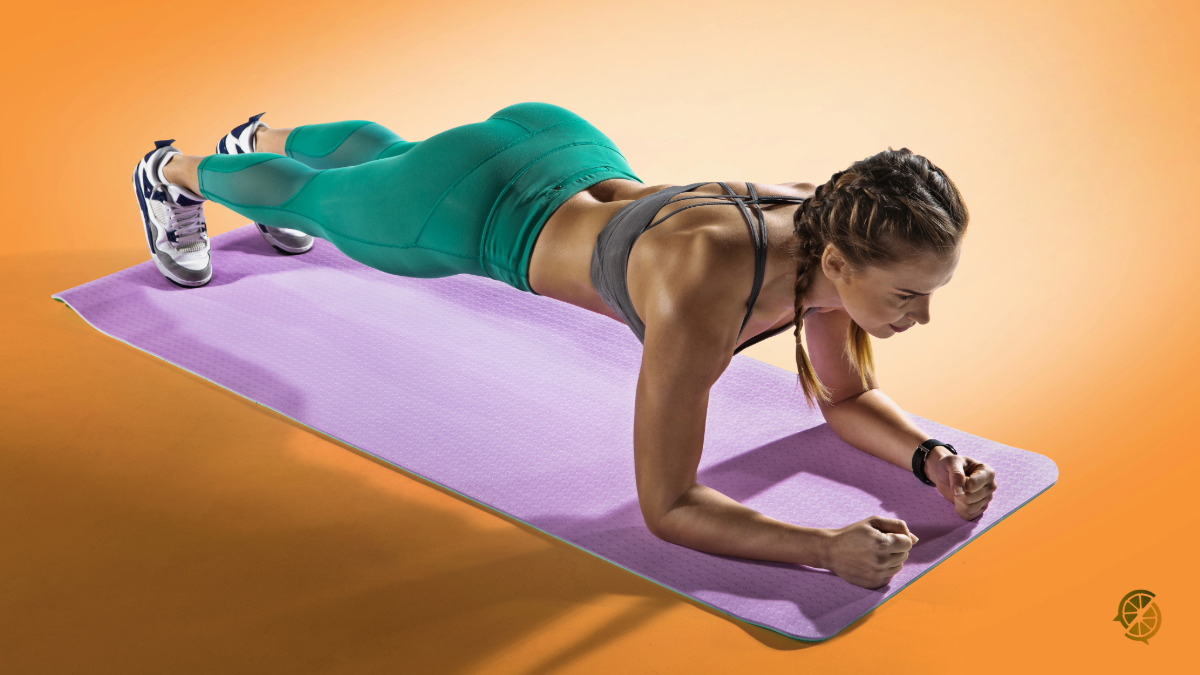Planking, a straightforward yet highly effective exercise, continues to be a popular method for conditioning the body.
This enduring appeal is expected to soar even higher in 2024, bolstered by a significant study that highlighted planking as one of the best exercises for lowering blood pressure. This discovery, coupled with its simplicity and accessibility, has made planking a staple in many fitness routines.
The exercise’s rising popularity is reflected in recent search trends. If you’re among those eager to incorporate planking into your workout routine, understanding its benefits and how to perform it correctly is essential.
The Health Benefits of Planking
Planking is renowned for its ability to strengthen the core, stabilise the spine, and improve overall fitness without the need for any equipment. Unlike many exercises that target only specific muscles, planking engages multiple muscle groups simultaneously. This not only builds strength but also enhances endurance and stability.
Strengthening Your Core: The core muscles, which include the abdominal muscles, lower back muscles, and the obliques, are crucial for almost every movement you make. A strong core improves balance and stability, reduces the risk of injury, and enhances performance in various physical activities. Regular planking can significantly enhance your core strength, making everyday activities easier and more efficient.
Stabilising Your Spine: Planking promotes proper posture by engaging the muscles around the spine. This stabilisation is essential for maintaining spinal health and preventing back pain. By holding the plank position, you force your body to maintain a straight line, which helps in developing better posture over time.
Lowering Blood Pressure: The 2023 study that propelled planking into the spotlight found that this exercise is particularly effective in lowering blood pressure. Participants who incorporated planking into their routine showed significant improvements in both systolic and diastolic blood pressure. This makes planking not only beneficial for muscular strength but also for cardiovascular health.
How to Get Started with Planking
Starting a new exercise can be daunting, but planking is simple enough for beginners yet challenging enough for seasoned athletes. Here’s a step-by-step guide to help you get started:
Step 1: Initial Position Begin by lying face down on the floor. Prop yourself up on your elbows and toes, keeping your body in a straight line from head to heels. Ensure that your elbows are directly beneath your shoulders.
Step 2: Alignment Maintain a straight line from your ankles to your hips to your shoulders. Engage your core by tightening your abdominal muscles and squeeze your glutes to prevent your hips from sagging.
Step 3: Holding the Position Hold this position for at least ten seconds to start. Gradually increase the duration as you become more comfortable and your strength improves. Aim to hold the plank for longer periods, working up to a minute or more.
Step 4: Advanced Position Once you’re comfortable with the basic plank, you can increase the difficulty by supporting your weight on your palms instead of your elbows. This variation engages different muscles and adds an extra challenge.

Incorporating Planking Into Your Routine
Planking is highly versatile and can be easily integrated into various fitness routines. For beginners, it’s advisable to start with shorter durations and focus on maintaining proper form. As you build strength and endurance, you can explore different plank variations such as the “plank up and down” or the “side plank” to keep your workouts challenging and engaging.
Plank Up and Down: This variation involves moving from a forearm plank to a high plank and back down. It not only targets the core but also works the upper body, particularly the shoulders and arms.
Planks for Seniors: Planking can be modified to accommodate different fitness levels, including seniors. Starting with a modified plank on the knees can reduce the intensity and make the exercise more accessible while still providing significant benefits.
Safety and Precautions
While planking is generally safe, it’s important to perform the exercise correctly to avoid injury. If you experience any pain, especially in the lower back, it may indicate improper form. In such cases, it’s advisable to stop and consult a musculoskeletal specialist to ensure you’re performing the exercise safely. They can provide guidance on correct form and suggest modifications if necessary.
Planking is set to remain a dominant trend in fitness circles in 2024, thanks to its numerous benefits and the recent findings highlighting its effectiveness in lowering blood pressure. Whether you’re a beginner or a seasoned fitness enthusiast, incorporating planking into your workout routine can help you achieve a stronger core, better posture, and improved overall health. Start slow, focus on proper form, and gradually increase the intensity to reap the full benefits of this versatile exercise.
